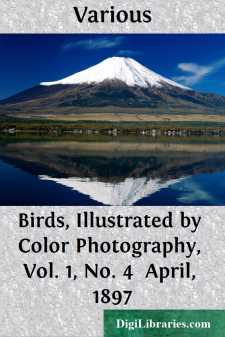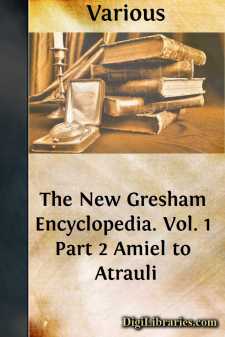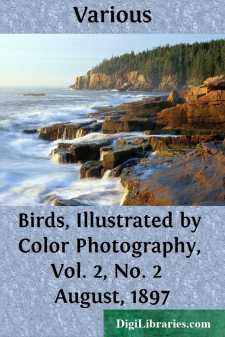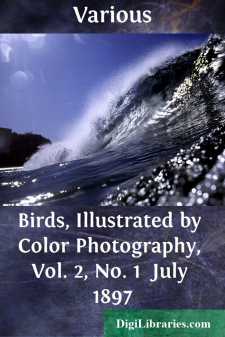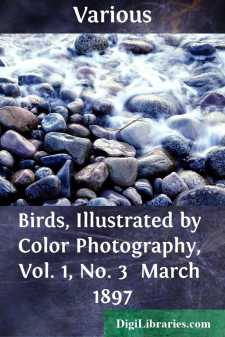Categories
- Antiques & Collectibles 13
- Architecture 36
- Art 48
- Bibles 22
- Biography & Autobiography 813
- Body, Mind & Spirit 138
- Business & Economics 28
- Children's Books 12
- Children's Fiction 9
- Computers 4
- Cooking 94
- Crafts & Hobbies 4
- Drama 346
- Education 46
- Family & Relationships 57
- Fiction 11821
- Games 19
- Gardening 17
- Health & Fitness 34
- History 1377
- House & Home 1
- Humor 147
- Juvenile Fiction 1873
- Juvenile Nonfiction 202
- Language Arts & Disciplines 88
- Law 16
- Literary Collections 686
- Literary Criticism 179
- Mathematics 13
- Medical 41
- Music 40
- Nature 179
- Non-Classifiable 1768
- Performing Arts 7
- Periodicals 1453
- Philosophy 64
- Photography 2
- Poetry 896
- Political Science 203
- Psychology 42
- Reference 154
- Religion 505
- Science 126
- Self-Help 81
- Social Science 81
- Sports & Recreation 34
- Study Aids 3
- Technology & Engineering 59
- Transportation 23
- Travel 463
- True Crime 29
Birds, Illustrated by Color Photography, Vol. 1, No. 4 April, 1897
by: Various
Categories:
Description:
Excerpt
THE ROSE-BREASTED GROSBEAK.
HIS is an American bird, and has been described under various names by various authors. It is found in the lower parts of Pennsylvania, in the state of New York, and in New England, particularly in autumn, when the berries of the sour gum are ripe, on the kernels of which it eagerly feeds. As a singer it has few superiors. It frequently sings at night, and even all night, the notes being extremely clear and mellow. It does not acquire its full colors until at least the second spring or summer. It is found as far east as Nova Scotia, as far west as Nebraska, and winters in great numbers in Guatemala. This Grosbeak is common in southern Indiana, northern Illinois, and western Iowa. It is usually seen in open woods, on the borders of streams, but frequently sings in the deep recesses of forests. In Mr. Nuttall’s opinion this species has no superior in song, except the Mocking Bird.
The Rose-Breasted Grosbeaks arrive in May and nest early in June. They build in low trees on the edges of woods, frequently in small groves on the banks of streams. The nest is coarsely built of waste stubble, fragments of leaves, and stems of plants, intermingled with and strengthened by twigs and coarser stems. It is eight inches wide, and three and a half high, with a cavity three inches in diameter and one in depth, being quite shallow for so large a nest.
Dr. Hoy, of Racine, states that on the 15th of June, within six miles of that city, he found seven nests, all within a space of not over five acres, and he was assured that each year they resort to the same locality and nest in this social manner. Six of these nests were in thorn-trees, all were within six to ten feet of the ground, near the center of the top. Three of the four parent birds sitting on the nests were males. When a nest was disturbed, all the neighboring Grosbeaks gathered and appeared equally interested.
It is frequently observed early in the month of March, making its way eastward. At this period it passes at a considerable height in the air. On the banks of the Schuylkill, early in May, it has been seen feeding on the tender buds of trees. It eats various kinds of food, such as hemp-seed, insects, grasshoppers, and crickets with peculiar relish. It eats flies and wasps, and great numbers of these pests are destroyed by its strong bill. During bright moonshiny nights the Grosbeak sings sweetly, but not loudly. In the daytime, when singing, it has the habit of vibrating its wings, in the manner of the Mocking-bird.
The male takes turns with his mate in sitting on the eggs. He is so happy when on the nest that he sings loud and long. His music is sometimes the cause of great mourning in the lovely family because it tells the egg hunter where to find the precious nest.
I don’t believe I shall let this bird talk to you, boys and girls, for I’m afraid he will not tell you what a funny fellow he is. Isn’t he a queer looking bird? See how ruffled up his feathers are. He looks as though he forgot to fix up, just as some little boys forget to comb their hair before going to school....


